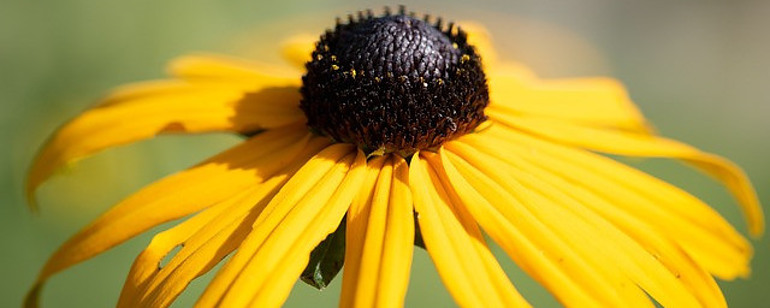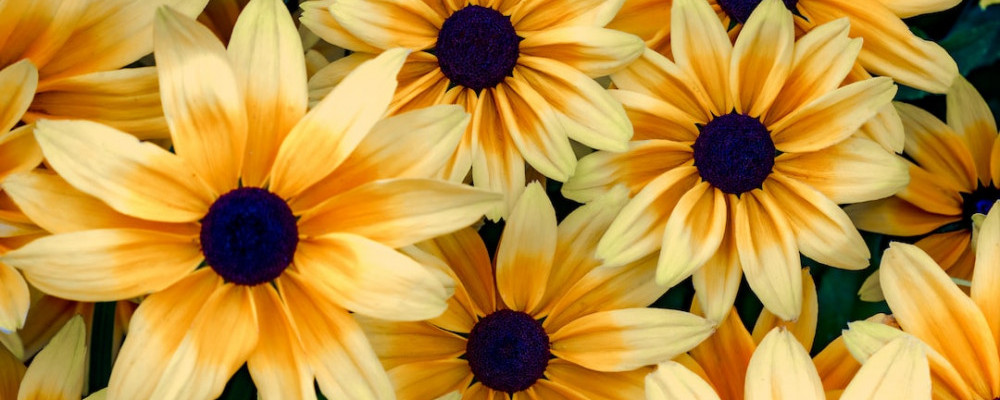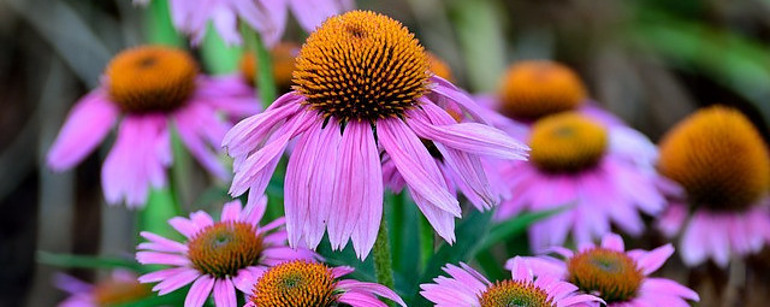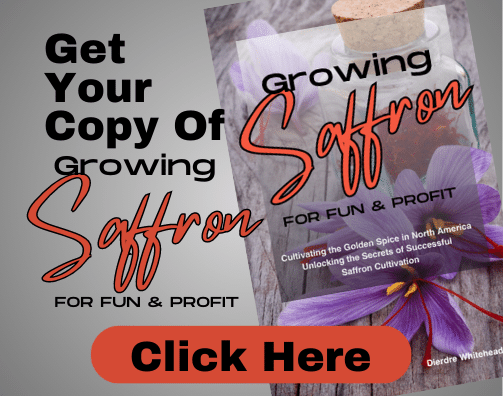
Rudbeckia, otherwise known as Black Eyed Susan, is a very popular flower. It is easily recognizable and easy to grow. It may also be called the coneflower due to the raised centre that may be black, brown or green. A wonderful, bright, fun addition to any bouquet, there are over 20 varieties of Rudbeckia. Rudbeckia is mostly perennial with some variations being annual or biennial. Native to North America Rudbeckia is cultivated cultivated for its showy, bright flowers that bloom from the middle of late summer. Rudbeckia make a great addition to flower arrangements and in the many variations it’s easy to find the best Rudbeckia for cut flowers.
North American Gem
Rudbeckia grows in clumps with many blooms on each plant. Native to North America this plant will grow anywhere from damp woodlands to dry prairies. For a flower farmer this plant is a great choice. There is great variety in the over 20 species and there are easy to establish and care for. The only general maintenance required is dead heading. Don’t be afraid to prune to give the blooms a longer stem. This makes arranging in bouquets easier.
Well known to the Native American, this plant was used for medicinal purposes, as poultices for snake bite, washing wounds and treating worms and colds. As the symbol of Maryland the “black eyed Susan” is woven into a blanket to be draped over the winner of the second jewel of the Triple Crown, the Preakness.

Sowing the Seed
Plant Rudbeckia seeds 4 – 6″ apart after the risk of frost is past. As with other plants starting seeds indoors will give you a head start. Rudbeckia prefers a sunny location. Over 12 hours of sun will ensure a quality plant. It it gets too hot, however, there is the risk that Rudbeckia will become gangly. Ultimately the plant may require up to 24″ of space as it mautures and spreads.
Do not over water your Rudbeckia but do deep water the plants especially when starting your plants. Once established these flowers are drought and heat tolerant. It is never a bad idea to get a soil sample assessed at your local agricultural centre. As Rudbeckia is native to North America as long as your soil is well drained with lots of organic matter your plant will thrive and give you lots of blooms.

Good Dirt
Rudbeckia does not require specialized soil. It is never a bad idea to get soil samples tested at your local agricultural centre but as a native plant in North America Rudbeckia will grow in most locales. A 12-6-6 slow release fertilizer can be used but Rudbeckia are moderate feeders. There might be a need for bone meal to be incorporated into the soil. Soil samples will tell you if you require additional phosphorus or lime. Planting Rudbeckia in the fall will allow it to acclimatize and thrive. They are easily propagated in zones 4-9.

Popular varieties
Rudbeckia is considered a perennial flowering plant with some exceptions. Rudbeckia Horta can be considered an annual. Other species commonly available are R. Fulgida, R. grandiflora and R. Triloba. The erect stems alternat deeply lobed, hairy leaves are what make it a great cut flower. Plants produce show flowers 2-3 inches in diameter with dark “eyes”. The grow 2 – 3 feet in height and the clumps are 1-2 feet across. In the flower garden they need to be spaced correctly to maintain air circulation as Rudbeckia can suffer from dowdery mildew. Fungal and bacterial leaf spots amongst other issues. Keeping the leaves dry with proper spacing that encourages air movement.
Naturally occurring predators an help to control Aphids, Caterpillars, Japanese Beetles and Two-spotted Spider Mites. If needed pests can be controlled with horticultural summer oil or insecticidal soap in spray form.

Rudbeckia fulgida has large lance-shaped, basal leaves, grows 2-3 feet high and 2 feet wide. It flowers mid to late summer and into the fall.
Choose “Goldstrum” for long sturdy stems and beautiful blooms.
Rudbeckia grandiflora is a large perennial species, growing over 3 feet high. Flowers are plentiful, bright and showy. They make perfect cut flowers.
Look for “Sundance” with its tall, large, gold/yellow flowers with droopy petals and deep green foliage.
Rudbeckia hirta is possibly the most popular. It is a self seeder that may survive winter dependant on the zone but is usually treated as an annual. Due to hybridization the flowers are more beautiful.
“Cherokee Sunset” grows 27 inches high and spreads up to 16 inches. A mix of brown, red and yellow, this flower is stunning.
“Goldilocks” is 20 inches high and grows up to 18 inches wide with large yellow flowers.
“Toto Lemon”, 16 inches tall and 12 inche wide, this smaller Rudbeckia is a great addition to a flower farmers garden.

Conclusion
Rudbeckia’s beautiful blooms, upright growth and deeply lobed leaves makes for wonderful mass plantings and wildflower garments that attract bees, butterflies and birds. Strong stems and bright colours make them excellent cut flowers.




We have a flower bed in the cement in the center of our patio. It has been filled in and leveled with gravel, but this year we have decided to get rid of the gravel and plant flowers. You article has given us a great starting point. I had not idea that there were varieties of black eye susans with different colors. Thanks for the tips about planting and soil,
Jim
They are very beautiful. I was surprised myself at the varieties. They will be included in my garden forever
Dee